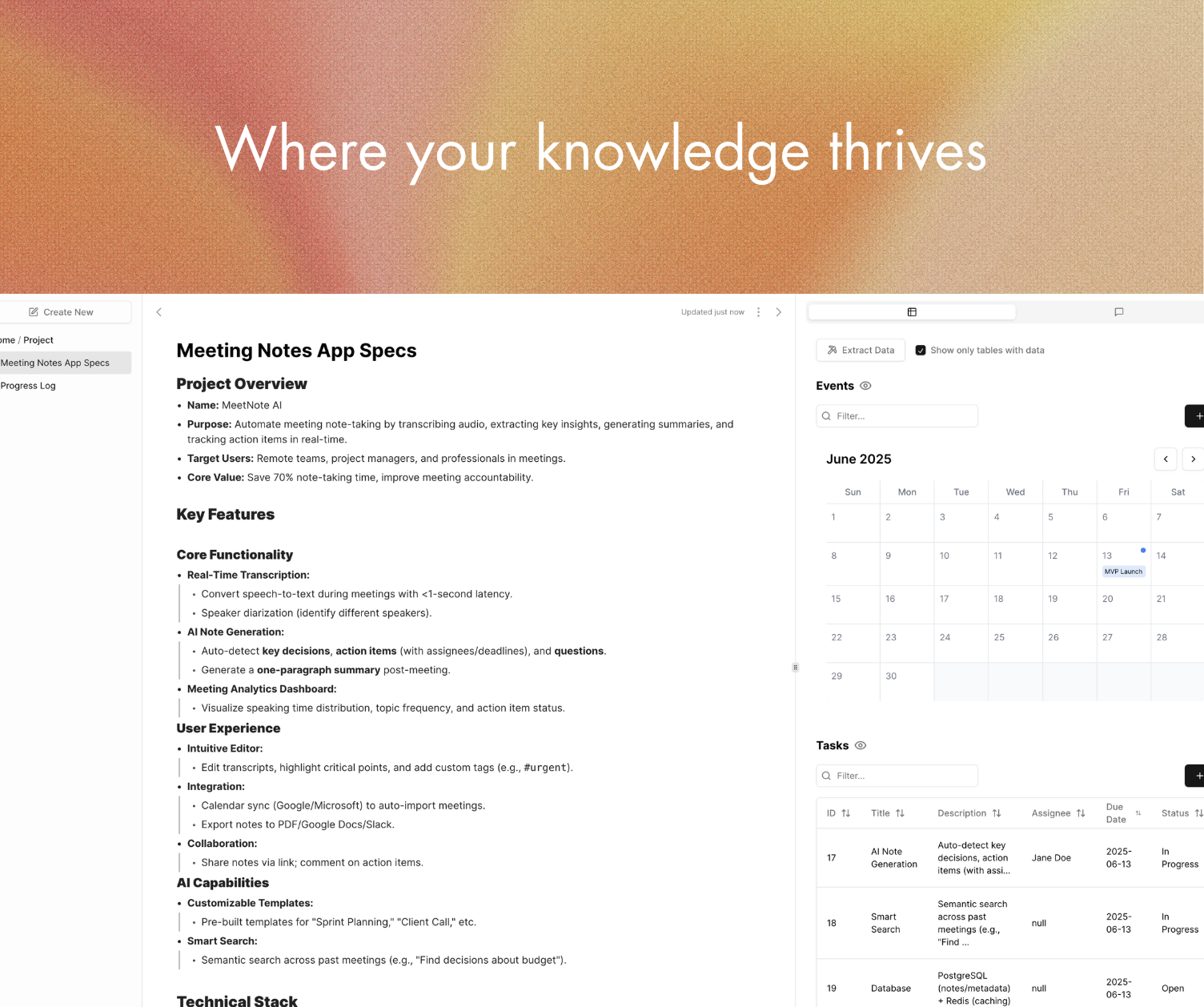
Table of Contents
Overview
Portals is an AI‐driven knowledge management platform that consolidates notes, files, and meeting transcripts into a connected knowledge graph. It enhances information retrieval, accelerates content creation, and powers AI agents for research and workflow automation.
Key Features
- Unified knowledge base: Centralizes notes, documents, and transcripts in one networked system.
- AI‐enhanced retrieval: Uses advanced language models to surface precise answers instantly.
- File imports and transcription: Supports PDF/Word ingestion, web scraping, and high-accuracy audio transcription.
- Task and event management: Lets you create, track, and link tasks and calendar items within your knowledge graph.
- AI agent optimization: Structures your data to boost AI assistant performance in research, summarization, and action execution.
- Contextual data organization: Maintains relationships between items so context is always preserved.
- RAG‐powered writing support: Integrates Retrieval-Augmented Generation to draft and refine documents using your own knowledge as context.
How It Works
- Data Ingestion: Write notes directly, import documents or scrape URLs, and transcribe meeting recordings.
- Graph Construction: Portals parses, tags, and links content into a semantic knowledge graph.
- AI Access: Whether through search, chat, or custom AI agents, the graph provides rich context enabling fast retrieval, automated research, and AI-assisted writing.
Use Cases
- Research organization: Gather articles, notes, and data for papers or projects.
- Team knowledge management: Build a shared hub of policies, procedures, and project artifacts.
- RAG application development: Power custom chatbots or tools with your own document set.
- AI content drafting: Generate outlines, reports, and blogs that cite your curated knowledge.
- Personal productivity: Track personal tasks, notes, and reference materials in one place.
- Internal documentation hub: Create searchable repositories for company manuals and guides.
Pros \& Cons
Advantages
- Unified data organization: All information lives in one interconnected graph.
- Strong AI retrieval: AI returns exact snippets or summaries from massive datasets.
- Flexible multimodal input: Ingest text, PDF, audio, and web content.
Disadvantages
- Early‐stage maturity: Some enterprise connectors (e.g., Jira, Salesforce) are still in development.
- Initial setup effort: Effective graph structure requires thoughtful tagging and organization up front.
- Limited API access: A public API is not yet available for custom integrations.
How Does It Compare?
- Notion AI: Notion focuses on document creation and collaboration. Portals emphasizes retrieval speed and agent-driven workflows over simple editing.
- Mem: Mem auto-tags and emphasizes rapid capture. Portals gives you explicit graph controls to define relationships and context for stronger AI use cases.
- Obsidian: Obsidian’s local-first graph is plugin-driven. Portals provides built-in AI models and RAG tooling without extra extensions.
Final Thoughts
Portals pioneers an AI-native approach to knowledge, turning scattered information into a living graph that fuels fast retrieval and autonomous AI agents. While still growing enterprise integrations and requiring an initial curation investment, its unique graph structure and RAG capabilities deliver powerful writing support, seamless search, and automated workflows. Anyone aiming to leverage their organizational knowledge and accelerate AI‐driven tasks will find Portals a compelling choice.

